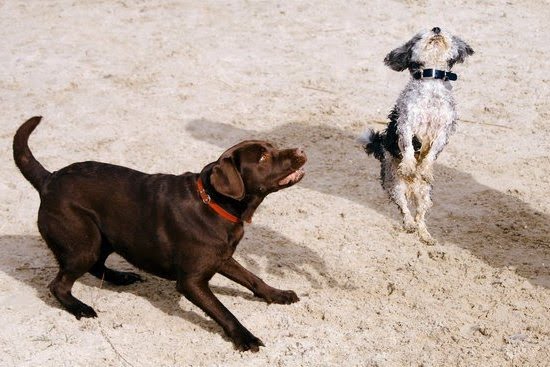Introduction
It is important to train your dog to behave in the house. Training will help prevent not only frustration, but also potential danger and damage to furniture and belongings. When properly trained, a well-behaved pooch will be more enjoyable for you both. Training your dog not only increases respect, but it also strengthens the trust and bond between you and your canine friend. Having rules in place allows you both to coexist harmoniously inside the home.
To begin, make sure your dog understands the commands that you are using during the training; these commands should be consistent and simple for them to understand (e.g., sit, stay, down). Some positive reinforcement like verbal praise or treats should also be used periodically throughout their learning process as encouragement.
Be patient when training your dog and give them plenty of time to learn as each individual varies on how quickly they catch on. Additionally, repetition is key with any kind of learning—practice each command several times in each session so they remember it longer until they have it entirely memorized. Be consistent when disciplining bad behavior; this reinforces good behavior over time by associating it with rewards or positive reinforcement. For example, if your pup jumps up on visitors provide them with treats for sitting instead after saying ‘sit’ verbally in front of guests. Aside from oral instruction, provide visual hand signals to demonstrate what the commands mean so they can start recognizing them without hearing it from you first.
Set boundaries no matter where you are training—indoors or outdoors—with commands such as ‘no’ or ‘stop’ whenever they do something wrong or inappropriate like chewing on furniture or barking excessively at strangers near windows making sure that all humans involved remain calm as dogs pick up on emotion as well when learning new things! Lastly, reward good behavior with a treat such playing fetch with a ball or tugging toys several times throughout the day so they view learning as fun rather than something difficult or tedious
Preparing to Train Your Dog
Before you begin training your dog to behave in the house, it is important to establish a training strategy and set expectations for yourself and your pet. First, decide on appropriate times and locations for different types of activities such as eating, playing and resting. Having a clear schedule will minimize confusion during the training process. Additionally, establish motivating rewards that you can use when your dog displays appropriate behavior, such as treats or verbal praise. It is also important to choose a specific verbal command that can be used consistently to cue desired behaviors throughout the entire process. Finally, create a plan of exercises designed to help your pet learn basic commands such as sit, stay and come. Establishing these criteria ahead of time will help ensure that you have all the necessary tools for successful training.
Begin Training
When training your dog to behave in the house, it is essential that you use commands and signs to communicate with your pet. Commands such as sit, stay, stop, down, off and others can be used to teach your dog basic behaviors and introduce them to you as the leader of their pack. Signs or hand gestures can also be used to communicate simple commands with your pet. For instance, a raised finger or palm can be used to signify stop or a flat hand held downward can signify down or lay. Additionally, a clap or snap of the fingers is an easy way for dogs to learn come when called or leave whatever they are doing. The key is consistency; repeating the same command with the same sign will help embed the behavior into your dog’s memory over time. Reward good behavior with treats or verbal praise and reinforce positive actions through repetition so that they become ingrained in their routine.
Building Good Habits
Training your dog to behave properly in the house should begin from an early age. Dogs learn from repetition and consistency. Start by establishing rules that are clear and consistent such as not allowing them to jump on furniture or counter tops, or not barking excessively indoors. Practicing negative reinforcement through mild discipline for breaking rules is important, but also recognizing and praising positive behaviors should be just as much of a priority.
To ensure consistent behavior in the long term, you should use reward-based training techniques. This involves rewarding your dog with treats or verbal praises – which overall positively reinforces desired behaviors like walking and sitting on command. Additionally, when they misbehave, redirect their attention to a more appropriate activity such as playing with a toy rather than scolding them directly; often times dogs misbehave out of boredom or lack of stimulation so providing an alternate outlet can prevent these behaviors from occurring in the future.
Overall, training your dog is important not only for helping them stay out of trouble in the short-term but also to create good behaviors lasting into adulthood! One final tip: try putting your pup through basic obedience classes run by experienced trainers- this will give them even more structure and help both you and your pup become more comfortable with each other’s role in the household hierarchy.
Practicing Patiently and Consistently
Training a dog to behave in the house should start with patience and consistency. When working with a new dog, the first step should be to establish clear expectations. Setting consistent rules and positive routines will help your dog understand what is expected of them. Always begin basic obedience training with rewards and never punishment. Rewards can include treats, verbal praise and/or an extended play session; punishments should focus on removing desirable items or withholding attention until the behavior has stopped.
Once you have established reward-based training, it is important to positively reinforce desired behaviors while actively discouraging undesired ones. In addition to practicing basic commands such as “Sit” and “Stay”, you should also address habits such as counter-surfing or jumping up on people by providing alternative activities for your pup (such as chewing certain toys). Additionally, teaching puppy manners like no barking in inappropriate places or not getting on furniture when told ‘no’ will help create good habits that will last a lifetime. Lastly, make sure to use respectful discipline as needed during your pup’s training process – this should be done calmly and firmly so that the dog recognizes their mistake without feeling scared or threatened. With some patience and consistency during these training sessions, your pup will quickly learn how to behave inside the house!
Keeping It Up
When it comes to successfully training your dog to behave in the house, one of the most important things you can do is maintain a regular training routine. Having a set routine helps your pooch understand expected behavior within the home and also give you an opportunity to reinforce positive behaviors with rewards and praise. Additionally, make sure that everyone living in the home follows the same training rules and reinforces proper behavior.
You should start out by introducing basic commands such as “sit”, “stay” and “come” using verbal cues or hand signals. Once your pup has learned these basics, consider adding more advanced behaviors such as retrieving items or having them bark on command. As each step is mastered, reward your pet with treats and praise. Also be sure to practice each command in different rooms of the house so that any potential distractions will not interfere with their learning.
Finally, as your dog learns appropriate behavior for inside the home make sure to also stay consistent with any corrections they may receive while they are still learning and always remain patient during any training session. Do not get frustrated if they are not responding quickly enough – it takes time for them to understand what you are asking of them. If a problem occurs, focus on fixing that particular behavior slowly but surely until they have mastered it once again to their satisfaction.
Troubleshooting
Dogs are wonderful companions, but sometimes they can exhibit inappropriate behaviors in the home. Common behavioral problems to watch out for include barking, chewing, jumping on people and furniture, going to the bathroom in the house, and not listening to commands. Each of these issues can be addressed with a positive training approach.
For barking, use distraction techniques like offering toys or treats when your dog begins to bark excessively. When your pup starts to chew that is not allowed, provide them with an appropriate toy to chew on instead and ensure they have enough mental stimulation and exercise through regular playtime. For jumping, calmly jump up first so that your dog sees you as the leader and learn how to teach them commands like “Sit” or “Stay” so they learn not to jump up at all. If potty accidents happen in the house, be patient and work on reward-based potty training while providing an area outside where they can go potty when necessary. Finally, train your four-legged family member basic commands like “Come,” “Fetch,” and “Leave it” which will help them understand expectations if they know what is expected of them from the start. Consistency is key during this process; remember it takes time for any pet to adjust their behavior accordingly so be patient with yours!
Conclusion
Training your dog to behave in the house is a great way to ensure they grow into a well-mannered, friendly pet. With proper instruction and practice, you can help your canine companion learn how to respect boundaries and fulfill their natural needs. Training offers a wide range of benefits, both for the dog and the family. It teaches them obedience, good manners, and even helps reduce destructive behavior. Additionally, it helps build a stronger bond between them and their owners. By establishing clear rules and boundaries from the very start of their training, you are helping create consistency that will carry forward into a lifetime full of happy memories with you and your four-legged friend.

Welcome to the blog! I am a professional dog trainer and have been working with dogs for many years. In this blog, I will be discussing various topics related to dog training, including tips, tricks, and advice. I hope you find this information helpful and informative. Thanks for reading!





